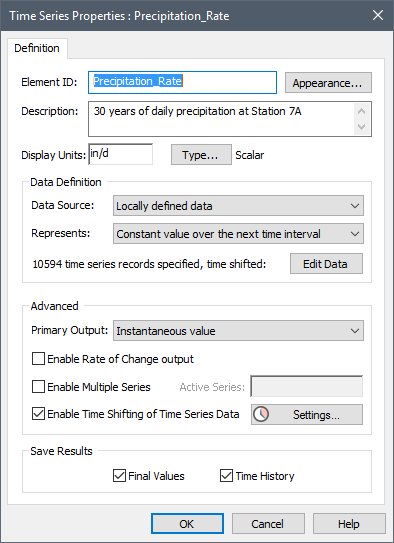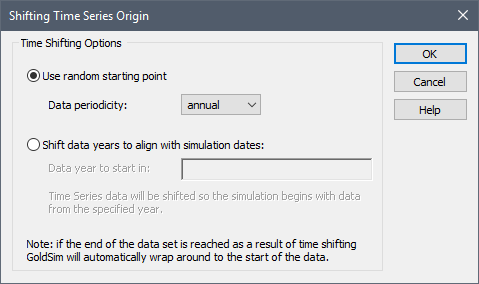Using Complex Time Series Data
Lesson 5, page 3 of 15
In many models, it is necessary to enter external time histories of data into GoldSim (i.e., a table showing how a variable changes as a function of time).
Time Series An Input element that allows you to specify a time series of values. elements The basic building blocks with which a GoldSim model is constructed. Each element represents a feature, pararamer, process or event in the model. are a type of input element that provides a very flexible and powerful way to do so:

You can use a Time Series element to input the predefined histories of things such as interest rates, commodity prices, temperature, rainfall rates, sales rates, cash flows, or the condition (reliability, strength) of a machine or a material. A Time Series element represents an exogenous (external) "driver" that can directly or indirectly influence An arrow connecting two elements that indicates that one element influences the other. the dynamic behavior of the system A subunit of the world separated by a boundary from the rest of the world. The description of the system is comprised of the relations within the system as well as those characterizing the action of the outside world on the system. being modeled.
Time Series elements provide a variety of powerful features.For example, in many cases, you will want to use historic data to populate a Time Series.Having done so, you then want to apply that historic data to your simulation (which likely looks forward in time). In order to do this, therefore, you need to time shift the data so that the historic data is applied in an appropriate and consistent manner.GoldSim provides a flexible option to do so:

Note: One possible way to more realistically have represented the inflow rate to the pond in the Tutorial example would have been to use a Time Series element with multiple 100 day series of historic data observed over the time period of interest.GoldSim could then have been instructed to randomly sample those series. Such an approach could also have been used to represent the occurrence of fire events.